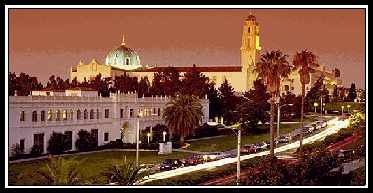 |
STATISTICS FOR MANAGERS
 |
| Spring 2017 |
|
Graduate (s) Business Administration 502 STATISTICS FOR MANAGERS |
|
||
|
| | HOME | SYLLABUS | CALENDAR | ASSIGNMENT | ABOUT PROF. GIN | |
|
Answers, Chapter 14 14.45 Zagat's publishes restaurant ratings for various locations in the United States. The data has the Zagat rating for food, decor, and service as well as the cost per person for a sample of 50 restaurants located in a city and 50 restaurants located in a suburb. Develop a regression model to predict the cost per person based on the ratings and a dummy variable for whether the restaurant is in a city (= 0) or in a surburb (= 1). * * * a. State the multiple regression equation that predicts cost based on location and the ratings of food, decor, and service. Costi = ß0 + ß1 Locationi + ß2 Foodi + ß3 Decori + ß4 Servicei + €i * * * b. Interpret the regression coefficients in (a). Costi = -31.83 - 6.33 Locationi + 0.20 Foodi + 1.97 Decori + 1.89 Servicei b1 = -6.33 => Cost will decrease by $6.33 if the restaurant is in the suburbs, holding all other independent variables constant b2 = 0.20 => Cost will increase by $0.20 for a 1-unit increase in the food rating, holding all other independent variables constant b3 = 1.97 => Cost will increase by $1.97 for a 1-unit increase in the decor rating, holding all other independent variables constant b4 = 1.89 => Cost will increase by $1.89 for a 1-unit increase in the service rating, holding all other independent variables constant * * * c. Predict the cost for a restaurant with a food rating of 18, a decor rating of 20, and a service rating of 22 that is located in a city. Costi = -31.83 - 6.33 (0) + 0.20 (18) + 1.97 (20) + 1.89 (22) = $52.67 * * * d. Perform a residual analysis on the results and determine whether the regression assumptions are valid. Heteroscedasticity None of the residual plots shows the fan shape that would be indicative of heteroscedasticity . Autocorrelation n = 100, k = 4, α = 0.05 => dL = 1.59, dU = 1.76
d = 1.66 => Uncertain . Multicollinearity VIF < 5 => No multicollinearity 5 < VIF < 10 => Uncertain VIF > 10 => Multicollinearity VIFLocation = 1.09 => No multicollinearity VIFFood = 2.07 => No multicollinearity VIFDecor = 1.50 => No multicollinearity VIFService = 2.56 => No multicollinearity * * * e. Is there a significant relationship between cost and the independent variables at the 0.05 level of significance? H0: ß1 = ß2 = ß2 = ß4 =0 H1: At least one ßj does not equal 0 α = 0.05, n = 100 FSTAT = (SSR / k) / (SSE / (n - k - 1)) α = 0.05 => F 4, 100 - 4 - 1, 0.05 = 2.45 => Reject H0 if FSTAT > 2.45 FSTAT = 38.67 > 2.45 => Reject H0, accept H1 * * * f. At the 0.05 level of significance, determine whether each independent variable makes a contribution to the regression model. H0: ßj = 0 H1: ßj ≠ 0 α = 0.05, n = 12
α = 0.05 => t100 - 4 - 1, 0.05/2 = 1.9853 => Reject H0 if tSTAT > 1.9853 or < -1.9853 ß1: tSTAT = -3.58 < -1.9853 => Reject H0, accept H1 ß2: tSTAT = 0.35 not > 1.9853 => Do not reject H0 ß3: tSTAT = 6.82 > 1.9853 => Reject H0, accept H1 ß2: tSTAT = 3.04 > 1.9853 => Reject H0, accept H1 * * * g. Construct and interpret 95% confidence interval estimates of the population slope for the relationship between cost and all the independent variables. βj ≈ bj ± tn-k-1,α/2 Sbj 95% C.I. => t100 - 4 - 1, 0.05/2 = 1.9853 ß1 ~ -6.33 ± 1.9853 (1.76)
ß2 ~ 0.20 ± 1.9853 (0.59)
* * * i. Compute and interpret the meaning of the coefficient of multiple determination, r2. r2 = 0.62 => 62% of the variation in cost is explained by the multiple regression model with location, food rating, decor rating, service rating * * * j. Calculate the adjusted r2. radj2 = 0.60 * * * m. What assumption about the slope of cost with each of the rating independent variables do you need to make in this problem?. The slope of cost with each of the rating independent variables is the same regardless of whether the restaurant is in a city or is in the suburbs. |